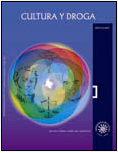Authors
Abstract
This research article is based on a “case closed” ethnomedical study held in 2009 in the northern coast of Peru. It’s a descriptive inclusive study carried out by means of participant observation in 55 sessions in which 227 patients were treated in order to verify the therapeutic properties of the Peruvian traditional medicine known as Mesas con San Pedro which is performed by the healer Marcos Carbajal (who makes part of the research group). For this purpose a consented follow up of patients, who had been treated previously with conventional medicine without satisfactory results, was carried out.
Keywords
References
________. (1969b). “Cactaceae Alkaloids. I”. Lloydia, 32, 206-216. Davis, E. (1983). “Sacred Plants of the San Pedro Cult”. Bot. Musseum Leaflets, 29, 367-385. Harvard University.
Dobkin de Rios, M. ()1977). “Plant Hallucinogens and the Religión of the Mochica -– an Anciant Peruvian People”. Economic Botany, 31, 189-203.
________. (1979). “Curanderismo Psicodélico en el Perú: Continuidad y Cambio”. En: Seguín, C. A. (ed.), Psiquiatría Folklorica. Shamanes y curanderos. Lima: Esrmar. pp. 67-74.
Friedberg, C. (1980). “Lo imaginario en las Terapias Populares”. Medicina Tradicional, 3, 29-44. (México).
Harley – Mason, J. et al. (1958). “I. The metabolism of mescaline in the human. II. Delayed clinical reaction to mescaline”. Confin. Neurol., 18: 152-155.
Kapadia, G. & Fayez, M. (1970). “Peyote Constituents: Chemistry, Biogenesis and Biological Effects”. J. Pharm. Sci., 59, 1699-1727.
Organización Mundial de la Salud -OMS-. (2000). General Guidelines for methodologies on research and evaluation of tradicional medicine, WHO, Geneve, 71p. (Chap. 3. Clinical Research: 11-16).
Patel, A. (1968). “Mescaline and related compounds”. Fortsch. Arzneim.-Forsch, 11, 11-47.
Polia, M. (1996). Despierta remedio, cuenta...: adivinos y médicos del Ande. Lima: Pontificia Universidad Católica del Perú. 893 p. 2 Tomos .Víctor;, Marco& Jorge. (2009). “Estudio Etnomedicinal de las Mesas con San Pedro. Verificación de casos de curación”. .Universidad de Caldas – Colombia.
Reyna P., Víctor & Flores G., José. (2001). “El uso del <«San Pedro»> (Echinopsis pachanoi) en medicina tradicional peruana”. Quepo, 15, 28-37. Perú.
Reyna P., Víctor; Carbajal F., Marco & Carbajal R., Jorge. (2009). “Estudio Etnomedicinal de las Mesas con San Pedro. Verificación de casos de curación”. Cultura y Droga, 14, 79-88. Universidad de Caldas, Colombia.
Seguin, Carlos A. et al. (1979). Psiquiatria Folklorica, Shamanes y curanderos. Lima: Esrmar. 156 p.
Sharon, D & Joralemon, D. (1993). Sorcery and Shamanism. Curanderos and Clients in Northern Perú. Utah: University of Utah Press. 306 p.

 PDF (Español)
PDF (Español)
 FLIP
FLIP

















